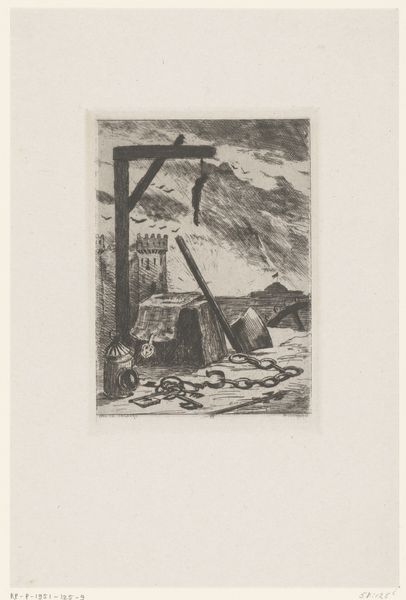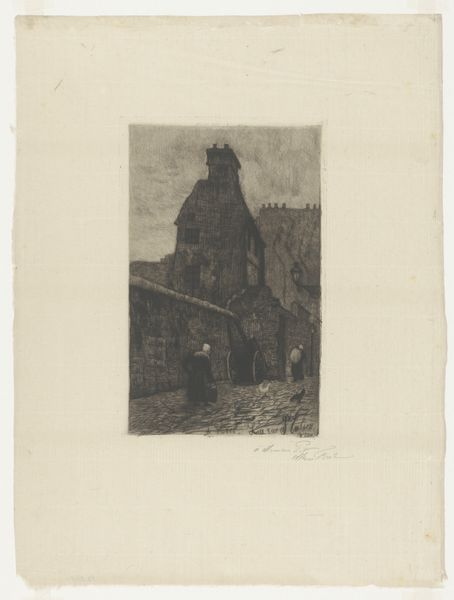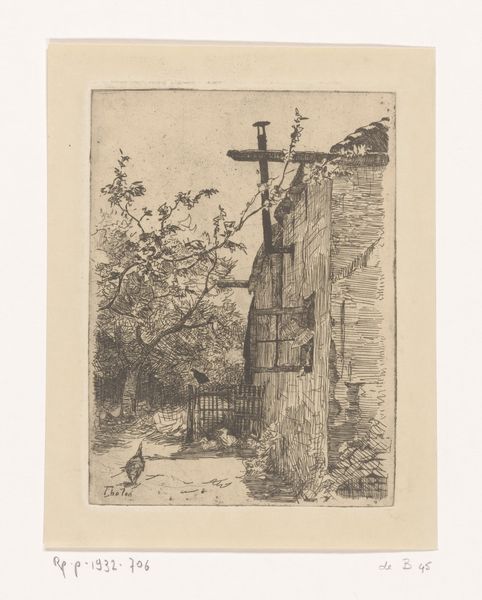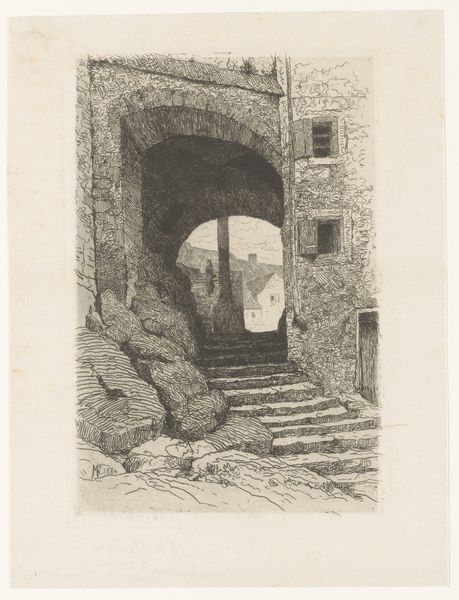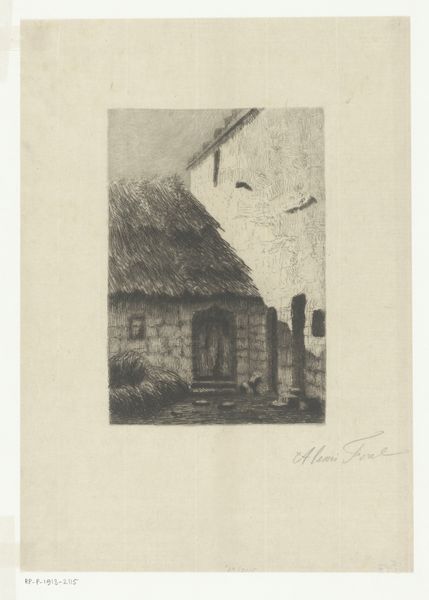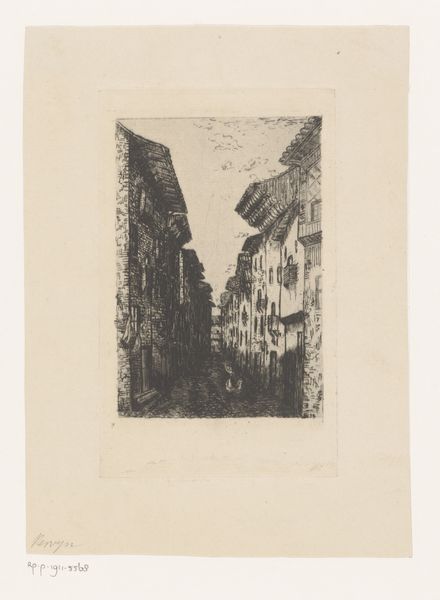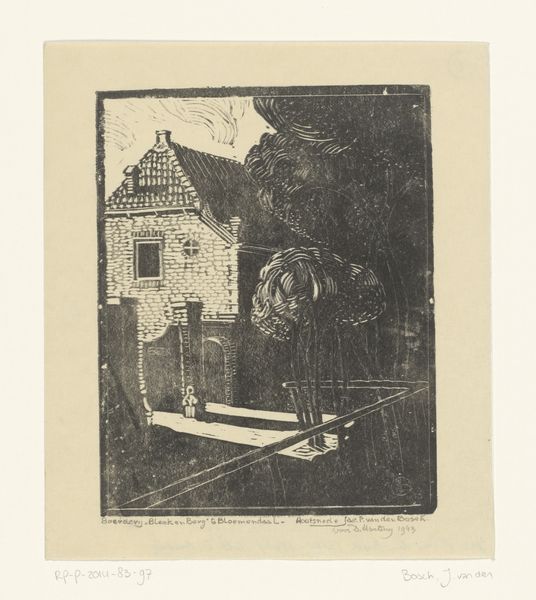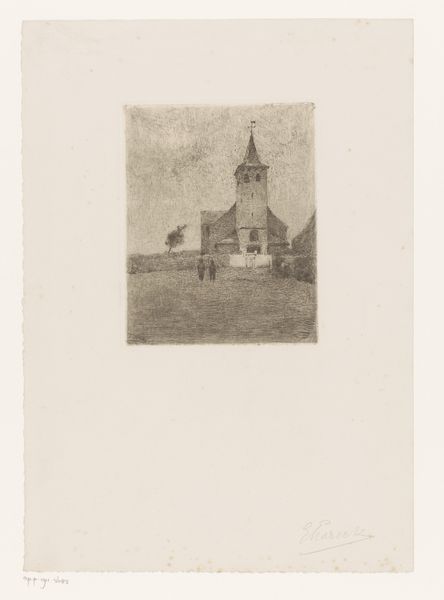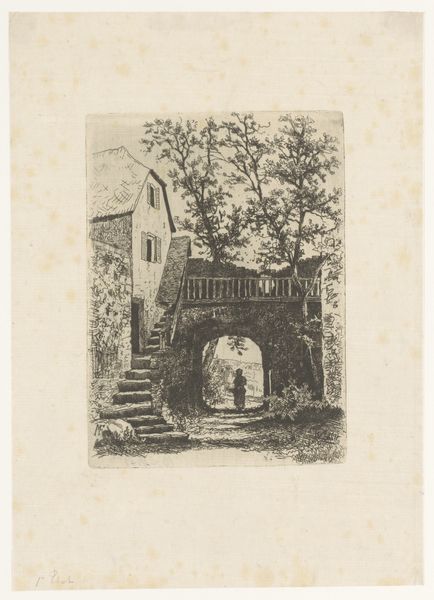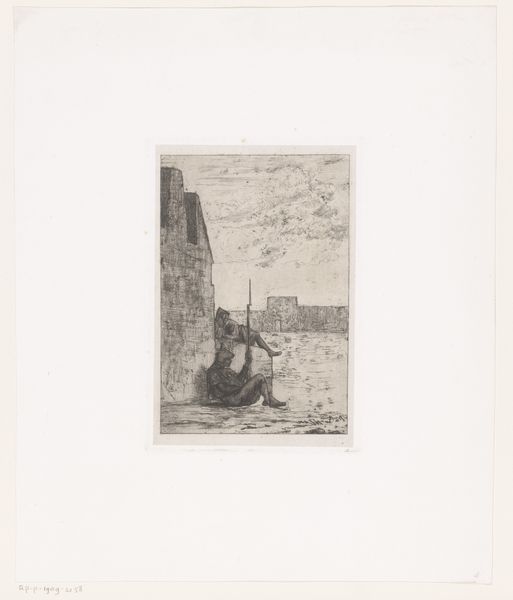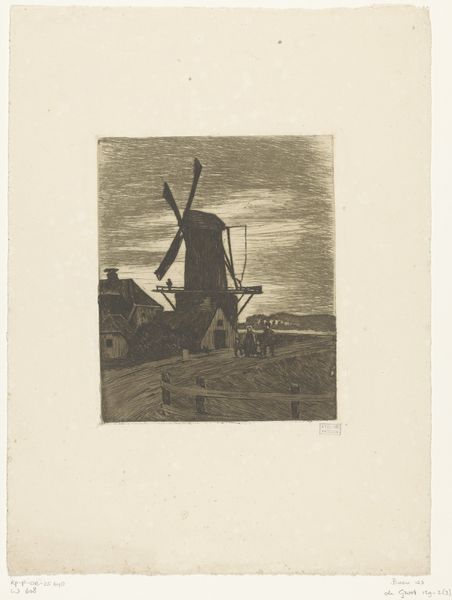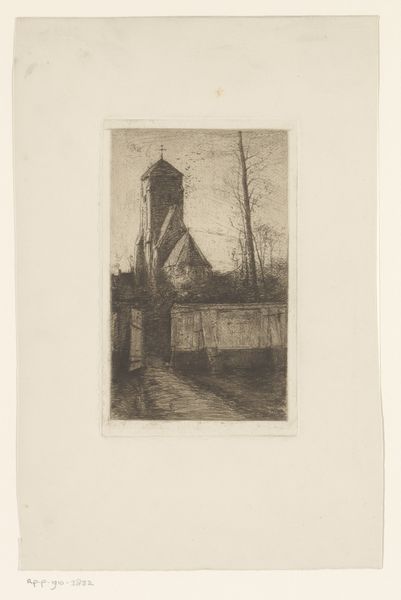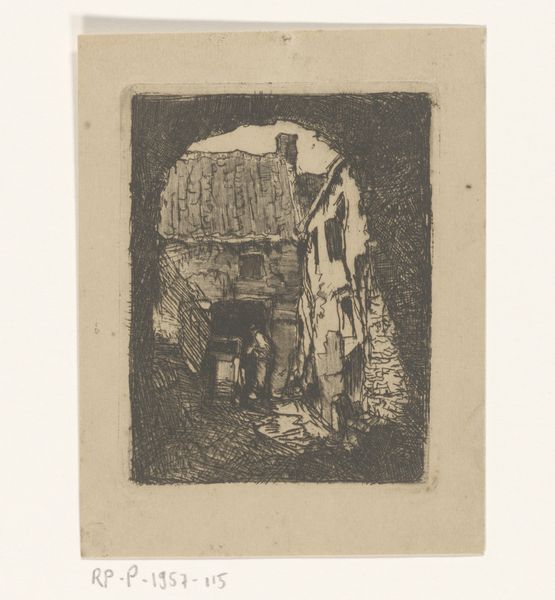
drawing, print, paper, ink, engraving
#
drawing
# print
#
landscape
#
paper
#
ink
#
genre-painting
#
engraving
Dimensions: height 175 mm, width 140 mm
Copyright: Rijks Museum: Open Domain
Curator: This delicate print, executed in ink on paper, is entitled "Vrouw bij een poort te Merksem" and is attributed to Armand Collard. While its exact creation date remains unconfirmed, stylistic features suggest it was likely created between 1848 and 1909. What are your initial thoughts? Editor: Starkly beautiful. It evokes a profound sense of solitude, doesn't it? The narrow street and the woman, small in stature, heading into the light… it's strangely melancholic, almost theatrical in its composition. Curator: Absolutely. Notice how Collard has framed the woman within the archway, creating a stage-like space. It invites speculation. Genre paintings like this offer windows into everyday life and collective identity. Merksem was, and still is, a village outside Antwerp, a peripheral, rural life that many wanted to move away from, or escape. Editor: That contextual layer significantly enriches our understanding. The arch itself is imposing, almost fortress-like. Do you think it functions symbolically, perhaps as a barrier between worlds, a gateway to… something beyond? Curator: It could easily be interpreted that way. Gates and doorways are potent symbols in art, representing transitions, thresholds, passages from one state of being to another. The presence of what looks like an old village well hints at rituals of washing, a symbolic cleanse of body or soul. Editor: The technique too heightens this sensation. The dense inkwork emphasizes the heaviness and darkness of the foreground, leading us towards that beacon of light. Is it, perhaps, critiquing the romantic ideal of escaping into nature, offering us instead a rather gritty image of country life? Curator: Precisely! Collard might be acknowledging the socio-economic tensions of rural existence during the 19th century. Engravings and prints such as this allowed wider audiences to experience glimpses of other realities, often laden with both idealization and social commentary. Editor: Considering its public role, it’s compelling how a seemingly simple image carries so much historical and symbolic weight, even now. It prompts a deeper reflection of our perception and valorization of what might appear an unspectacular village scene. Curator: It is the visual artifact of a specific moment and culture; these sorts of works challenge us to remember those perspectives. What was seen as the everyday and unremarkable for people 150 years ago is now a relic filled with multiple possibilities.
Comments
No comments
Be the first to comment and join the conversation on the ultimate creative platform.
